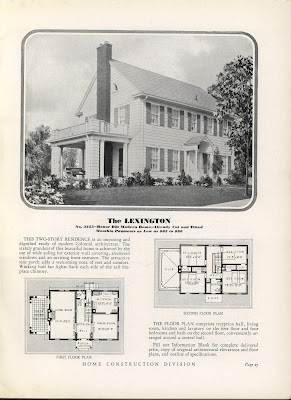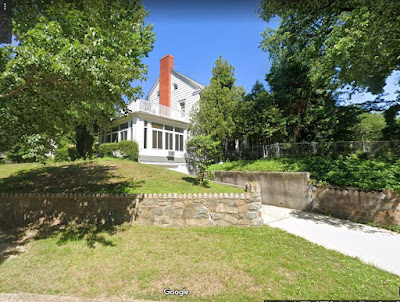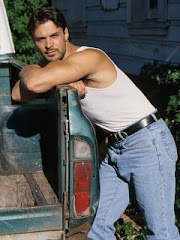 |
| Sears Lexingtton on the cover of the 1928 Sears Modern Homes catalog. Click to enlarge. |
 |
| Sears Lexington, 1929, which was a revision of an earlier model. |
 |
| Specifications and options for the 1929 model. |
 |
| Sears Lexington from the 1932 catalog, showing an actual photograph of this model as built. |
As everyone knows by now, I suppose, Sears, Wards, and other companies offered pre-cut materials to build houses in the first decades of the 20th century, as well as heating, plumbing, and electrical systems. Those houses ranged from tiny cottages to almost-mansions, in all the popular styles of the era.
The Lexington was one of the high-end models; to that $4000 price tag for pre-cut lumber and materials (windows, doors, nails, paint, flooring, mouldings, etc.), add about $1500 for all utitilies and necessary options like window screens and asphalt roof shingles, as well as who knows how much for the lot to build it on and the cost of excavating a basement, plus bricks and cement (not supplied by Sears), and carpenter's wages for whatever work you didn't do yourself.
So the total cost might have been around $8000 - equivalent to $144,000 today, according to Measuring Worth. This for a 36 x 26 floor plan, for a total of 1,872 square feet. And that's just for the house, not including furniture and appliances, nor landscaping nor even a garage for your Pierce-Arrow.
But of course most people bought much less expensive homes. The whole idea of the pre-cut, "mail-order" houses was to get a low-cost, well-built home that you could put up yourself, or, as many people did, hire a carpenter to erect it. A great idea in its time, and makes for fascinating reading today. If you're interested in that sort of thing, check out the Wikipedia article on "kit homes" here.
Bonus: Thousands of Sears homes are still standing and much loved today by happy homeowners. Here's a Lexington in Washington, D. C., that occupies its own triangular block. The plan is reversed from that shown in the catalog, an easy change. Some owner screened and expanded the side porch, and cleverly added a basement-level garage below. The house appears to be well kept, but looks rather bleak in a monochrome paint scheme, stripped of its colonial shutters. Why are modern people so afraid of color?
-----
































2 comments:
Nothing like that in New Mexico (not that I’m aware of). More like the East Coast and South perhaps. Leon and I were driving around Sandia Heights in Albuquerque earlier today. The homes are monstrosities. Most are enclosed by walls and fancy wrought iron fences that easily cost as much as our house. Not something we aspire to. I don’t think we would consider the Lexington either. We probably couldn’t afford the taxes. Where DO people get their money?
I have often asked the same question. A great many white people today seem to have buckets of money to spend on big houses, new cars, $1000 teleophones, and trips to Hawaii or other "destination vacations." They have jobs that pay mucho dinero, I guess, but I never had such. I worked in education and social services, so I never went hungry but was always just getting by - no room for extravagance in my budget. Now, even youngsters in their 20s and 30s seem to have money to burn. I don't understand it.
BTW, owing to the Yankee hegemony, those old plan books from Sears and others are full of "New England" homes - the dignified two-story jobs like the Lexington, and the cozy Cape Cods. I like the looks of the Lex, but I couldn't handle all the stair-climbing. (We don't do stairs or basements down here.) But I'd build it in red brick with white columns to give ir a Southern flavor, natch.
Post a Comment